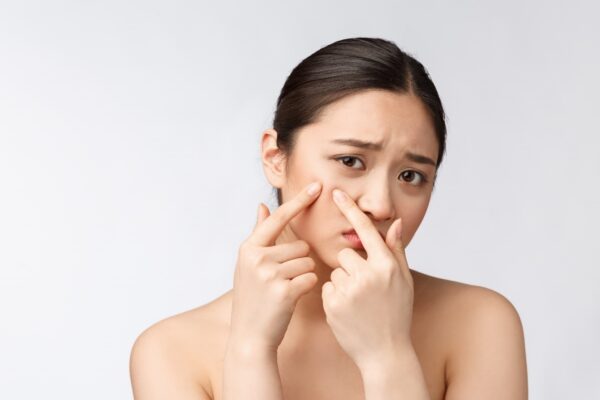Acne vulgaris is one of the most common dermatological conditions, affecting millions worldwide. Despite its prevalence, the intricate biological mechanisms driving acne development remain misunderstood by many. At its core, acne results from a complex interplay of hormonal fluctuations, sebaceous gland dysfunction, microbial colonization, and a heightened inflammatory response. This multifaceted process underpins the visible lesions and discomfort experienced by patients. According to Dr. Richard Hatfield, understanding the pathophysiology of acne is crucial for designing effective, targeted treatment strategies.
Hormonal Influence and Sebum Production
The relationship between hormones and acne development is profound, particularly during adolescence and other periods of hormonal flux. Androgens, such as testosterone and dihydrotestosterone (DHT), play a pivotal role in stimulating sebaceous glands. These hormones increase sebum production, creating an ideal environment for acne to develop. While sebum itself is essential for maintaining the skin’s protective barrier, excessive production can lead to complications.
Sebum overproduction, combined with keratinocyte hyperproliferation, causes follicular occlusion. This blockage traps sebum and debris within the follicle, setting the stage for acne lesion formation. This hormonal-driven sebaceous gland dysfunction is particularly evident in individuals with conditions like polycystic ovary syndrome (PCOS), further emphasizing the role of systemic factors in acne pathogenesis.
The Role of Cutibacterium Acnes
Once the follicle is blocked, it becomes an ideal environment for microbial colonization. The anaerobic bacterium Cutibacterium acnes (formerly Propionibacterium acnes) thrives in this lipid-rich setting. While C. acnes is a natural part of the skin microbiome, an overgrowth within the follicular unit triggers a cascade of events that exacerbate acne.
The metabolic activity of C. acnes contributes to the degradation of sebum into free fatty acids, which are highly inflammatory. Additionally, the bacterium releases lipases, proteases, and chemotactic factors that recruit immune cells to the site of colonization.
This microbial activity not only perpetuates inflammation but also weakens the follicular wall, leading to rupture and the subsequent spread of inflammatory mediators into surrounding dermal tissues.
The Inflammatory Cascade
Inflammation is a hallmark of acne, transforming a blocked follicle into a visibly inflamed lesion. This process begins with the activation of innate immune pathways. Pattern recognition receptors (PRRs), such as toll-like receptors (TLRs), detect bacterial components from C. acnes. The activation of these receptors initiates the release of pro-inflammatory cytokines, including interleukin-1β (IL-1β), tumor necrosis factor-alpha (TNF-α), and interleukin-8 (IL-8).
These cytokines recruit neutrophils, macrophages, and other immune cells to the site of infection. Neutrophils release reactive oxygen species (ROS) and proteolytic enzymes, which contribute to tissue damage and the visible redness and swelling associated with inflammatory acne. Chronic inflammation can also lead to scarring, especially in nodulocystic acne, underscoring the importance of early and effective intervention.
Genetic and Environmental Contributions
While hormonal, microbial, and inflammatory factors are central to acne pathogenesis, genetic predisposition plays a significant role in an individual’s susceptibility. Studies have shown that genetic variations can influence sebaceous gland activity, keratinocyte behavior, and immune response pathways.
Environmental factors, including diet and stress, also modulate acne severity. High-glycemic diets and dairy consumption have been implicated in exacerbating sebum production and inflammatory responses. Similarly, psychological stress can increase cortisol levels, further stimulating sebaceous glands and worsening acne lesions.
Targeting the Pathophysiology for Treatment
Understanding the pathophysiological processes of acne is critical for tailoring effective treatments. Therapies targeting sebum production, microbial overgrowth, and inflammation form the cornerstone of acne management.
- Hormonal Modulation: Treatments like oral contraceptives and anti-androgen agents (e.g., spironolactone) directly address hormonal influences, reducing sebaceous gland activity.
- Antimicrobial Approaches: Topical and systemic antibiotics, alongside benzoyl peroxide, target C. acnes. However, the rise of antibiotic resistance necessitates cautious use and alternative therapies, such as light-based treatments.
- Anti-Inflammatory Agents: Retinoids, corticosteroids, and emerging biologics aim to reduce the inflammatory cascade, preventing tissue damage and scarring.
The Future of Acne Research
The field of acne research continues to evolve, with a growing focus on the skin microbiome, novel anti-inflammatory agents, and personalized medicine. The development of therapies that selectively target pathogenic C. acnes strains while preserving the beneficial microbiome could revolutionize treatment approaches. Furthermore, advances in understanding the gut-skin axis may lead to systemic therapies that address acne from within.
In conclusion, acne is far more than a superficial skin condition. Its pathophysiology reflects a dynamic interplay of hormonal, microbial, and inflammatory processes. By delving into these mechanisms, dermatologists can refine therapeutic strategies, ultimately improving outcomes for patients worldwide.
